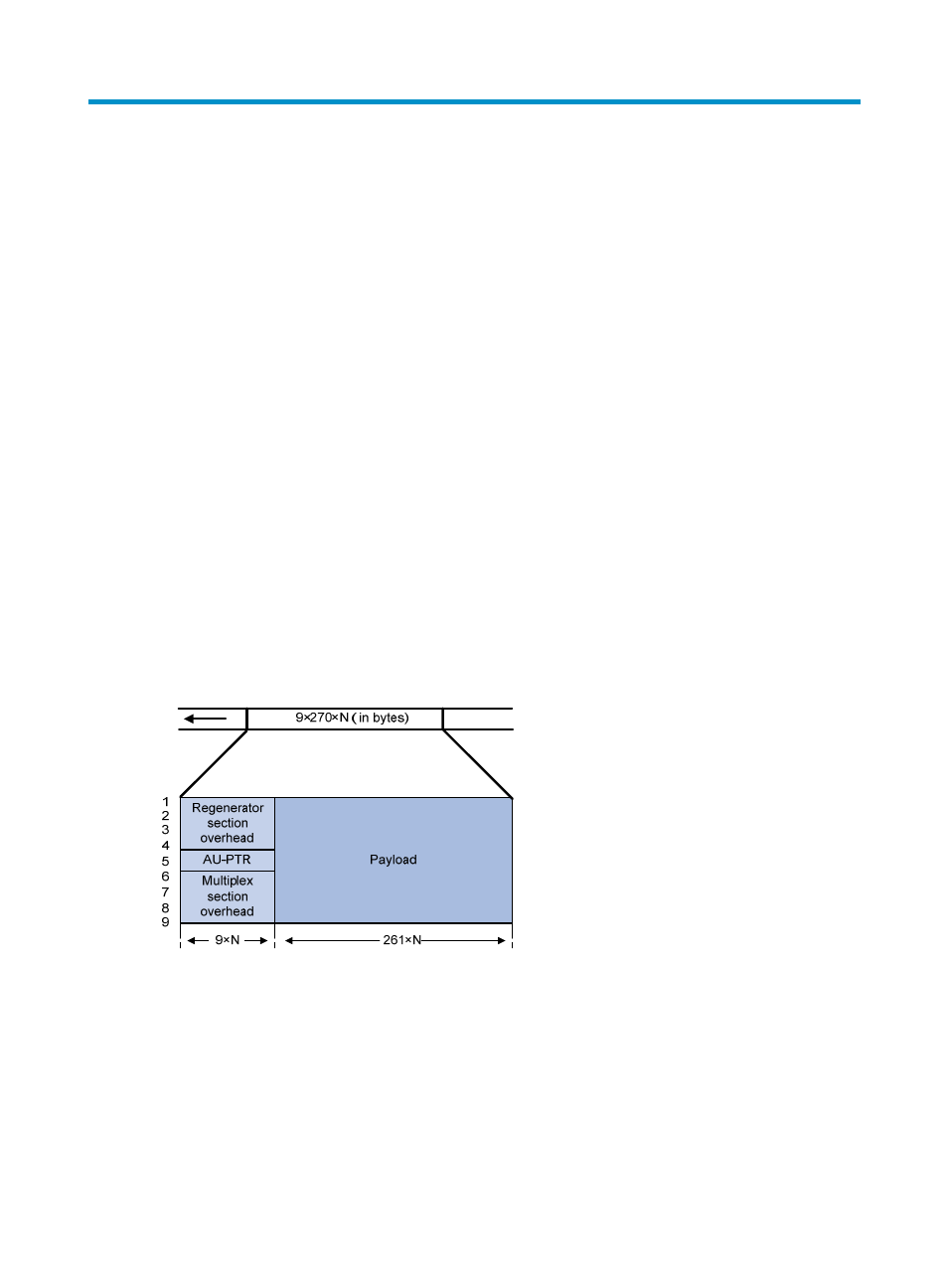Configuring e-cpos interfaces, Overview, Sonet – H3C Technologies H3C SR8800 User Manual
Page 49: Sdh frame structure

42
Configuring E-CPOS interfaces
Overview
SONET
Synchronous Optical Network (SONET), a synchronous transmission system defined by the ANSI, is an
international standard transmission protocol over fiber-optic. SONET transmission rates form a sequence
of OC-1 (51.84 Mbps), OC-3 (155 Mbps), OC-12 (622 Mbps), and OC-48 (2.5 Gbps). Because signals
are synchronous, SONET can multiplex signals conveniently.
SDH
Synchronous Digital Hierarchy (SDH), defined by the CCITT (today’s ITU-T) uses a SONET rate subset. As
SDH adopts synchronous multiplexing and allows for flexible mapping, low-speed tributary signals can
be added to or dropped from SDH signals without a large number of multiplexing/demultiplexing
devices. This reduces signal attenuation and investment in network devices.
SDH frame structure
Low-speed tributary signals should distribute in a frame regularly and evenly for the convenience of
adding them to or dropping them from high-speed signals. The ITU-T stipulates that STM-N frames adopt
the structure of rectangle blocks in bytes, as shown in
:
Figure 13 STM-N frame structure
STM-N is a rectangle-block frame structure of 9 rows x 270 x N columns, where the N in STM-N equals
the N columns. N takes the value 1, 4, 16, and so on, indicating the number of STM-1 signals that form
SDH signal.
The STM-N frame structure consists of three parts: the section overhead (SOH), which includes the
regenerator section overhead (RSOH) and the multiplex section overhead (MSOH); the administration
unit pointer (AU-PTR); and payload. AU-PTR is the pointer that indicates the location of the first byte of the
payload in an STM-N frame so that the receiving end can correctly extract the payload.
